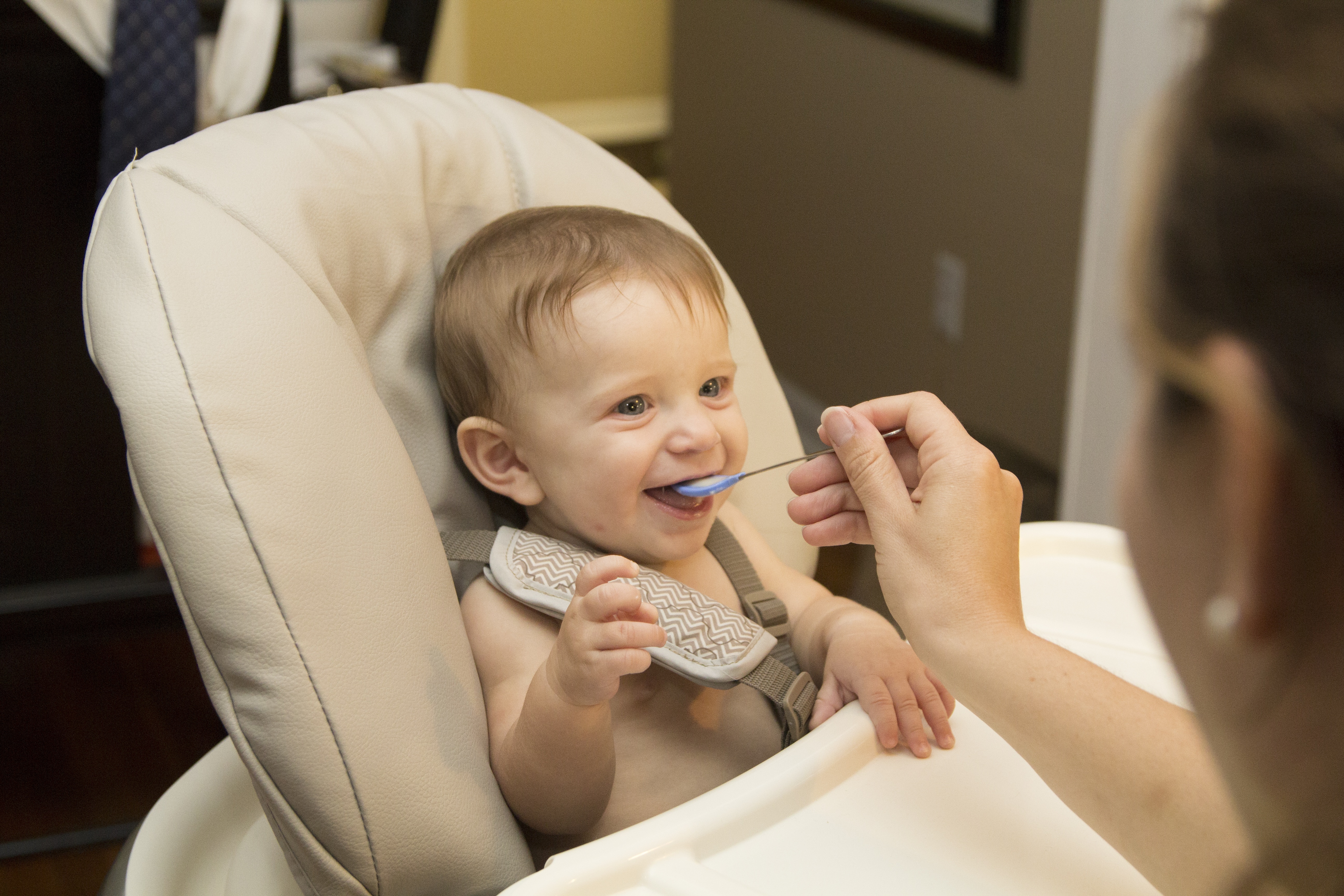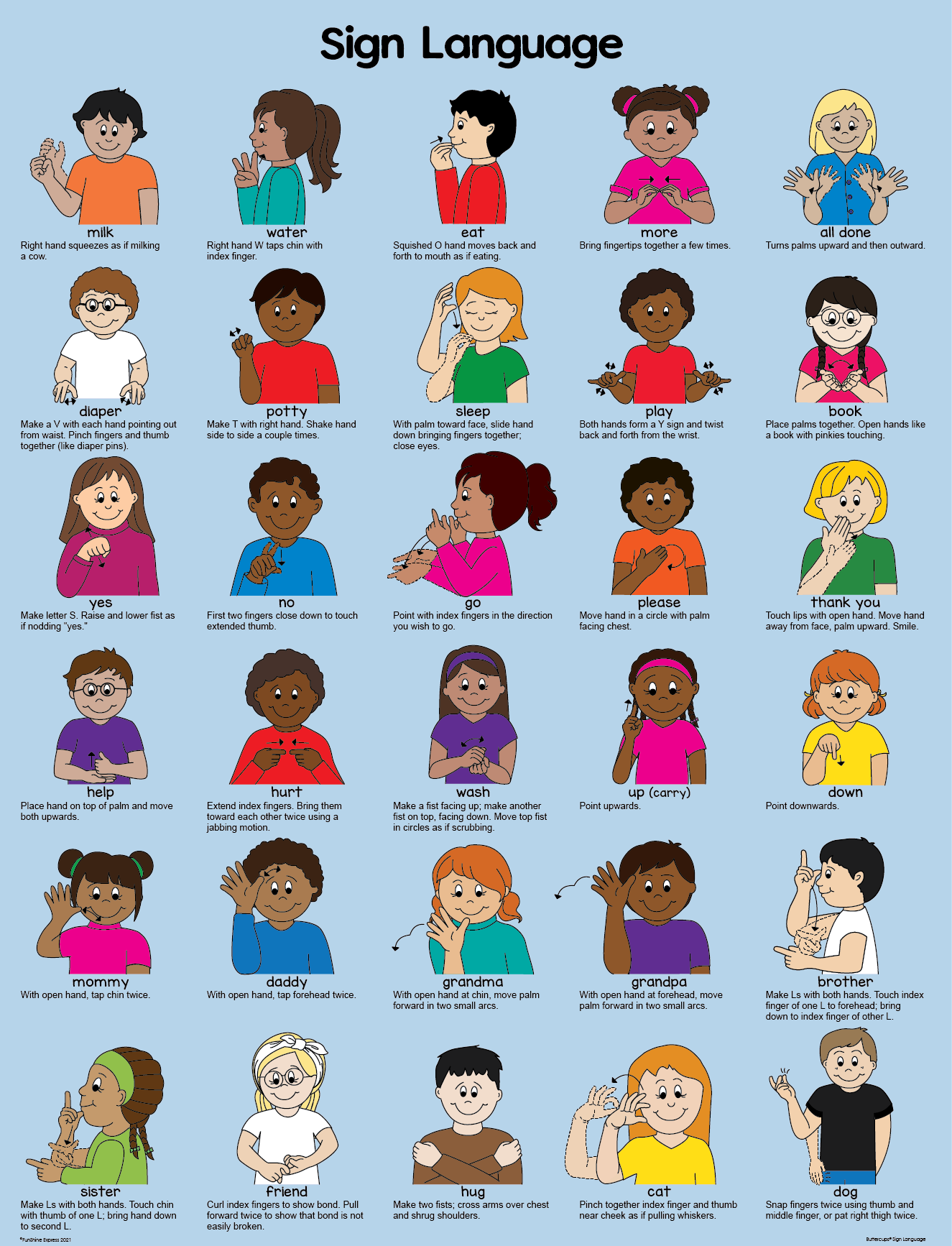Working with infants can involve a lot of guess work! Babies cry, make sounds and facial expressions, and use body movements to express their needs and wants, but still, it’s not always clear how to assist them. Babies typically start talking between 9 and 14 months. Until then their mental vocabularies are forming and are much more advanced than we realize. Though babies cannot speak, they understand quite a bit. While talking to children regularly and narrating their play will support language acquisition, you can help them express their needs, wants, and emotions by introducing baby sign language.
What is baby sign language?
The foundation Pathways defines baby sign language as “the use of hand and body gestures to help babies communicate before they learn to speak.” This may be the same as or different than American Sign Language (ASL) depending on the preferences of a child’s family or caregiver or even the child herself. Children will often develop their own gestures for familiar items, essentially creating personal signs that the adults in their lives understand. It’s important to know that when using baby sign language, children may make up their own signs or use sign approximations depending on their fine motor development.
When can I start using baby sign language?
General guidance recommends introducing and using signs regularly starting around 6 months of age, with the expectation that children will start using the signs themselves as they approach one year of age. Some experts say that if a child can wave, it’s a good time to start using baby sign language.
How do I use baby sign language?
 Introduce signs to babies during routine activities. For example, you might introduce the signs for milk, drink, eat or more during bottle feedings or mealtimes, the sign for sleep as you prepare for nap time, and the signs for mommy or daddy during arrival or departure times. Introducing signs in context or when you can offer the specific object will help children learn and retain them.
Introduce signs to babies during routine activities. For example, you might introduce the signs for milk, drink, eat or more during bottle feedings or mealtimes, the sign for sleep as you prepare for nap time, and the signs for mommy or daddy during arrival or departure times. Introducing signs in context or when you can offer the specific object will help children learn and retain them.
Start by teaching one to three signs at a time and focusing on them daily. For example, if you introduce the sign for drink, make the sign each time you offer the baby a drink. It may even come up while you are pretending with a stuffed animal or doll, when you might say, “Does the doll want a drink?,” while you using the sign. As children master these initial signs, you can add more to your dialogue. Always speak and sign at the same time.
Be patient as you introduce signs to children. Look for ways to assess their understanding. A child who is not yet ready to sign back may respond in other ways when you use a sign to gauge a need or want. Notice, too, if children invent signs by observing their actions to see if they consistently repeat a movement when referring to a need/want or object.
Which signs should I start with?
Start with signs that make sense in the context of your daily routine or that relate to children’s needs, wants, and feelings. Since working with infants revolves around care routines, it makes sense to start with signs related to feeding, sleeping, playing, and family.  The signs for milk, eat, more, all done, sleep, ball, book, and car are among the 10 most popular first signs for babies according to Lane Rebelo, founder of the program Tiny Signs®, in her book Baby Sign Language Made Easy: 101 Signs to Start Communicating with Your Child Right Now. FunShine Express offers a Sign Language Poster in its Buttercups curriculum Starter Pack and sign language cards in its Buttercups Babies infant curriculum boxes to help you get started. There are also several online resources and books (see below) to assist you in your efforts. The most important thing to remember is to follow each child’s lead. Choose signs that meet children where they are developmentally and address their interests.
The signs for milk, eat, more, all done, sleep, ball, book, and car are among the 10 most popular first signs for babies according to Lane Rebelo, founder of the program Tiny Signs®, in her book Baby Sign Language Made Easy: 101 Signs to Start Communicating with Your Child Right Now. FunShine Express offers a Sign Language Poster in its Buttercups curriculum Starter Pack and sign language cards in its Buttercups Babies infant curriculum boxes to help you get started. There are also several online resources and books (see below) to assist you in your efforts. The most important thing to remember is to follow each child’s lead. Choose signs that meet children where they are developmentally and address their interests.
Online Resources
Books
Back to blog listing